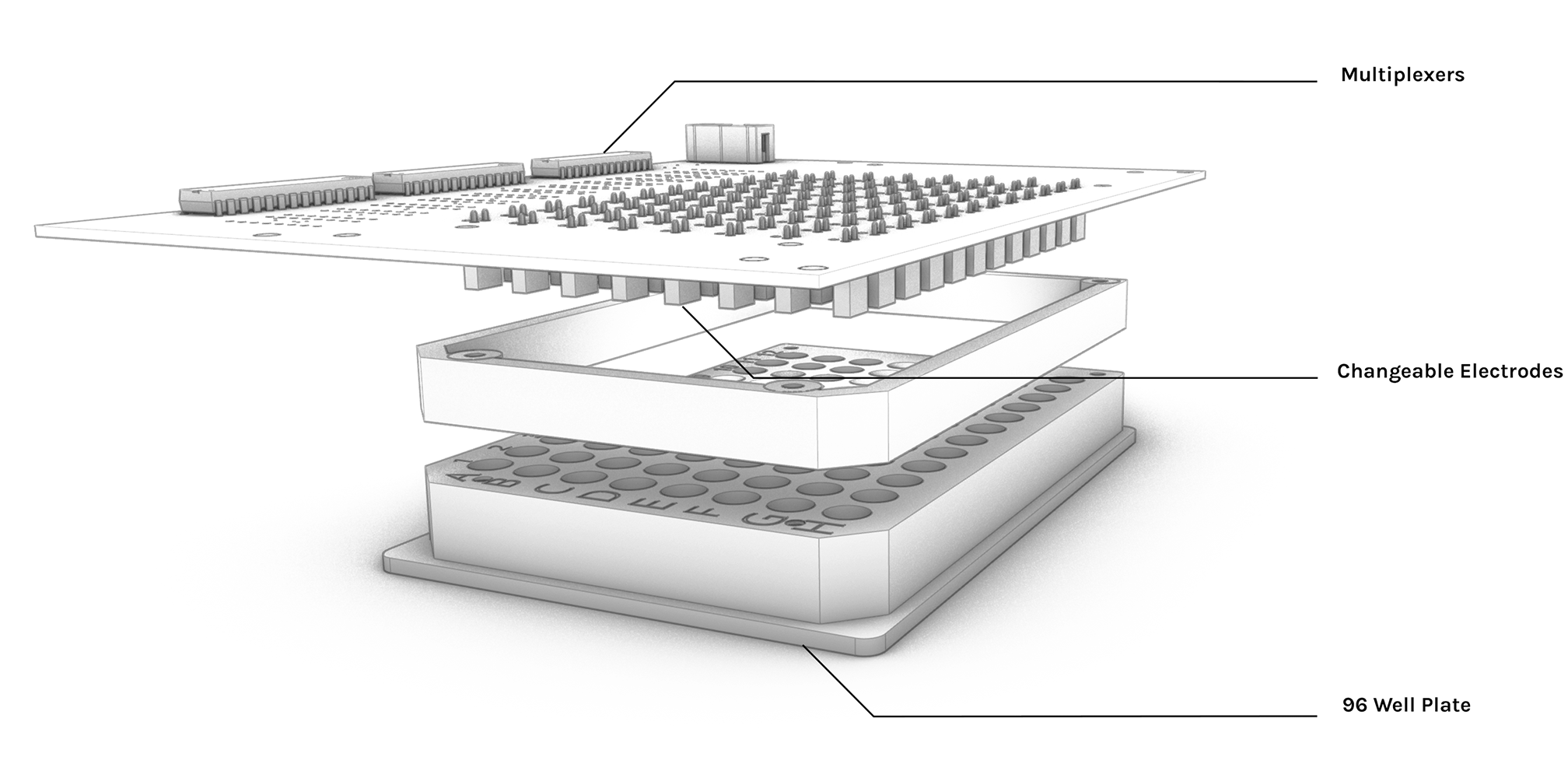Materials and methods |
|
As this experiment aim is to evaluate electroshock condition, stayed consistant with the strained used in [1] and worked with E. coli MG1655. We grew the bacteria's overnights on M9 (0.4% Glucose, complete Amino Acids). In the morning, we diluted the cells into fresh M9 Media to a ratio of 1:100. From a previous experiment[2], we determined that mid-log phase (OD600 = 0.4) was attained after 4 hours of growth . We waited 4 hours to perfom the electroshocking experiment We used the HTEA in conjunction with the AC Dispatcher (ACD) and the Electro Planner to shock the bacteria with AC current of different amplitudes (from 0.2volts to 11 volts) . We used the MHS2300A dual function generator and the MHS2300A Python library to communicate Experiments were done in triplicates |

High throughput Electro Actuator (HTEA)